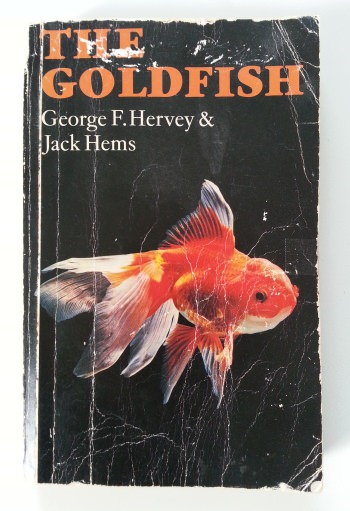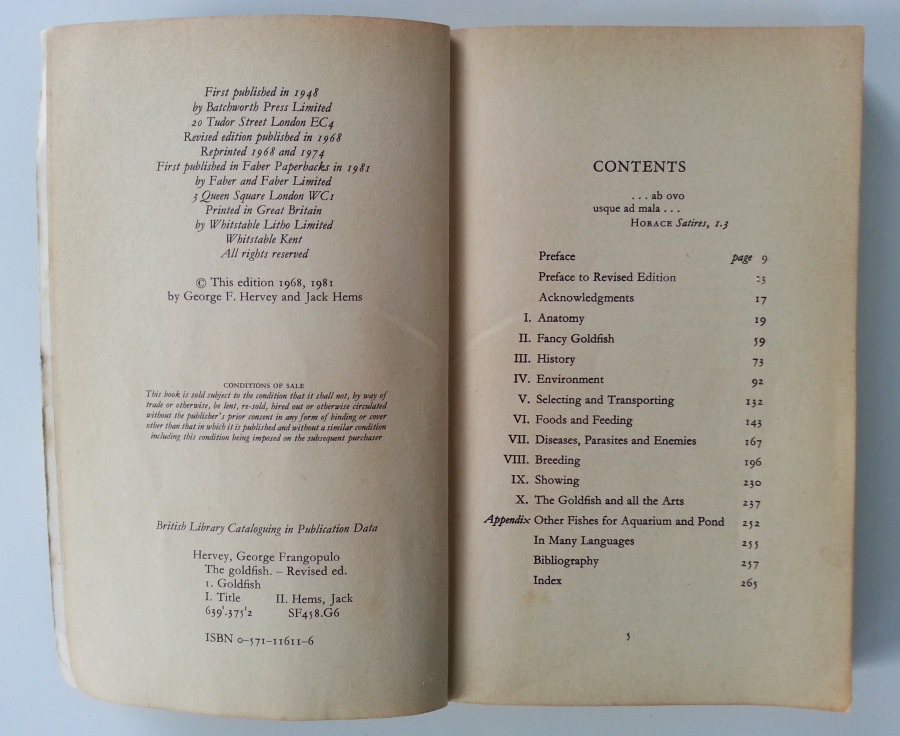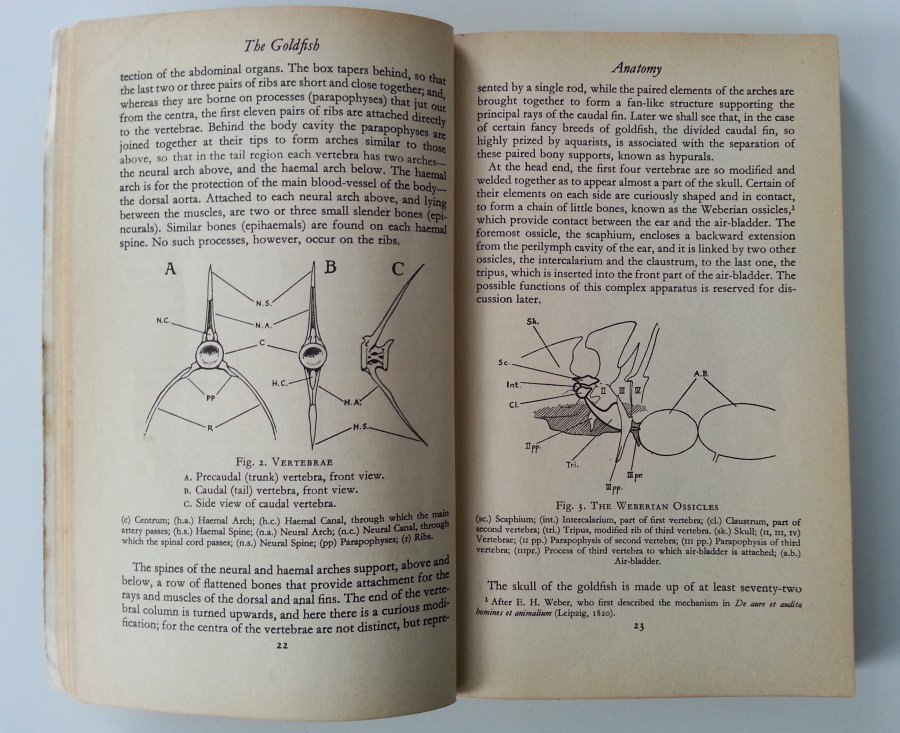- Home
- Books About Goldfish
- The Goldfish Book Review
The Goldfish - Book Review
Looking for an in-depth, well written early book about Goldfish?
I
did not receive a free copy of this book and I was not asked to review
it. It's here because I view it as one of the most useful resources for
anyone wanting to learn more about Goldfish.
If you want to buy it, click on any of the links to Amazon. I will earn a small commission, at no cost to you.
 1981 revised paperback edition
1981 revised paperback editionDid you know a Goldfish scull is made up of at least 72 bony elements?
This is the level of detail this book goes into, not in a technical way, but just because this book was very well researched back in 1948 when it was first published.
It was written during WWII, when communication was difficult and resources scarce.
It is held in such high esteem that it is still being referred to in more recent books such as the 1996 Goldfish book Goldfish Breeding and Genetics by Smartt and Bundell.
Many chapters such as the Anatomy, Fancy Goldfish and History
sections are still current
today.
Some chapters are showing the book's age such as the Environment section suggesting that a stream or pond was the best water source, not the domestic tap, and that chlorine was usually not a problem as the level in most municipal supplies was very low.
Book Details:
|
Print length: 271 pages Available as: Hard cover and paperback |
Publication dates: 1948, 1968, 1981 Size: 7.75x5x0.625 inches |
What Are the Benefits from Owning the Book?
Owning a piece of early Goldfish history is one of the main benefits. It was first published 75 years ago in 1948, and revised and republished in 1968.
Most books burst on to the scene, then fade away. Not this book. This book is often cited in current Goldfish publications because of the high esteem much of the information is still held in.
Sure, some of the information is out of date, and some is downright dangerous to your fish, but the History, Anatomy, Foods and Feeding, and
Fancy Goldfish chapters
are still very current, well researched, and very detailed.

Here is a complete list of its chapters
- Anatomy
- Fancy Goldfish
- History
- Environment
- Selecting and Transporting
- Foods and Feeding
- Diseases, Parasites and Enemies
- Breeding
- Showing
- The Goldfish and all the Arts
- Appendix -Other Fishes for Aquarium and Pond
- Index
What Makes This Book Special?
Having been written so many years ago, it give a rare insight into how some facets of Goldfish keeping have changed enormously, yet others still remain the same today.
A good example is the exclusive feeding of dry prepared foods to fancy varieties. Even 75 years ago it was recognized as a prime cause of constipation leading to swim bladder and buoyancy problems.
Another is the conclusion that the chief source of disease in Goldfish is "uncleanliness and incorrect feeding". So true.
 Sample pages from the Anatomy chapter
Sample pages from the Anatomy chapterWhat's the Best Features of This Book?
The Anatomy, Fancy Goldfish, History and Foods and Feeding chapters are still very current.
It explains the importance of aquarium location for optimal lighting, and many other tips such as how to disinfect plants before planting them.
The 50 very detailed hand drawn illustrations (1981 paperback version) are just as useful as any photograph. Earlier hard cover editions had photographs as well but the plates for these were lost.
What I Don't Like About the Book
The level of detail in this book has to be applauded, but by the last edition in 1981, some of the information is now well out of date.
Because the majority of the World's population is living in cities, tap water will be used for water changes most of the time. Suggesting pond or stream water as the best source for the aquarium and pond was a stretch in 1968, but certainly so by the last edition in 1981.
The author's suggestion of always having a Black Moor in a communal aquarium to be used as an indicator of lowering water quality is quite surprising. Common sense should have told them a Moor is not going to compete successfully for food because they are myopic and, because of slow starvation, is usually the first to die.
Keeping fancy varieties in ponds was seen as a pointless waste of time, and frankly dangerous. I keep all my fancies in ponds year round because I can more easily control nitrate and pH levels, and natural sunlight enhances their colors.
The treatment of diseases is similar to today, but some of the suggested remedies are downright dangerous. These days medications that contain praziquantel for parasite control are much safer than formalin and ammonia dips.
Their slighting of salt as a medication is odd. Many alternatives for some diseases they suggest are much more dangerous. I can only conclude that they were unaware of the effectiveness of a 0.3% solution on a wide range of pathogens.
Brine shrimp nauplii as a first food for fry is never mentioned in the breeding chapter so I assume it was not available in those early days. Feeding alternatives such as egg yolk and other powdered foods is reflected in the expected size of fry at 6 weeks old of 10mm. Fry given a good start with brine shrimp should be closer to 18mm at that age.
What Other Reviewers Say
This book is rated at 4.5 out of 5 stars on Amazon.
There aren't enough reviews to give an accurate rating for this book from buyers.
The book is quite rare now, and hard to find.
My second hand copy is the 1981 paperback edition, which is a reprint of the 1968 revised edition. I would suggest getting the 1968 or 1981 editions as the 1948 may be just a little too outdated.
My rating of this publication is 4.00 stars – a must have for serious Goldfish geeks.
Top of The Goldfish Book Review page